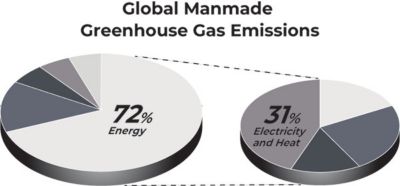-
-
Access Free Student Software
Ansys empowers the next generation of engineers
Students get free access to world-class simulation software.
-
Connect with Ansys Now!
Design your future
Connect with Ansys to explore how simulation can power your next breakthrough.
Countries & Regions
Free Trials
Products & Services
Learn
About
Back
Products & Services
Back
Learn
Ansys empowers the next generation of engineers
Students get free access to world-class simulation software.
Back
About
Design your future
Connect with Ansys to explore how simulation can power your next breakthrough.
Free Trials
ANSYS BLOG
August 31, 2023
Using Digital Engineering to Solve the Energy Trilemma
Today’s global energy industry is faced with a trilemma, which is easily summarized by three statements:
1. We need securable, affordable, and scalable energy to serve our growing population.
2. That energy must be delivered, converted, and consumed more efficiently.
3. We need new, cleaner energy sources to support this growth and replace a large portion of the fossil fuels because their combustion is a major cause of greenhouse gas (GHG) emissions.

As usual, stating the problem is easier than solving it. Regarding point 1 above, while we have delivered electricity to about 1 billion more people in the past few decades, there remain about 1 billion people without access to electricity. So, we must scale up energy production and delivery while simultaneously trying to reduce our global carbon footprint.
Point 2 drives home the magnitude of the energy challenge that we face. Today, 60% to 67% of the energy that is sourced, converted, and consumed worldwide is wasted through inefficiencies.1 Improving energy efficiency could provide more than 40% of the reductions in carbon pollution needed by 2040 to meet the terms of the Paris Agreement on climate change.2
Point 3 — developing cleaner sources of energy — may seem obvious, but that doesn’t make it easy. Each new source has its own challenges.
Fortunately, digital engineering — the application of digital technologies to engineering, encompassing design, simulation, optimization, and operation of systems and processes over the life cycle of a product — is already making a big contribution to energy efficiency and sustainability. Its contribution will only increase with time.

Globally, the primary sources of greenhouse gas emissions are electricity and heat (31%).
Efficiency from Start to Finish
To reduce our current energy consumption and our GHG emissions by about 40% in the short term — and the short term is probably all we have to slow the pace of climate change — the best plan is to improve energy efficiency in all products and processes.
Consider that 31% of the world’s GHG footprint today comes from the conversion of fossil fuels into electricity and heat3 and ~45% of that electricity is used in electric motors alone.4 So, today’s electric motors, before the massive electrification of the transport sector that will happen in the next decades, are already contributing about 15% of the total GHG produced by humans. Any efficiency increase in electric motors will directly reduce global GHG emissions by a few percent. That sounds small, but it would be a big win for the planet. One of our customers that produces water pumps has improved their product’s efficiency by more than 80% over the last decade or so. They credit simulation at the component and integrated systems levels for the achievement of such remarkable results, which explains why they are No. 1 in this space.
Digital engineering is the main accelerator to achieve this efficiency. Ansys is committed to supporting our customers to achieve these goals:
- Adopting sustainability-by-design principles to make better product life cycle impact assessments from the start
- Accelerating the new energy transition by maturing low-carbon technologies
Sustainability by Design
Incorporating sustainability into the design process from its earliest phases is important because most of a product’s cost and carbon footprint are determined during the development and design cycle. That’s where the product’s mass energy consumption is set in stone.
Critical decisions at this point include materials selection: the weight of a material can largely affect the energy efficiency, and the recyclability of a material can affect costs and sustainability. Simulation solutions like Ansys Granta MI, which contains a comprehensive library of material properties that can be easily imported into simulations, can help engineers choose the most energy efficient and cost-effective materials.
Lightweighting is another path to energy efficiency. Determining the optimal shape of a component using topological optimization in Ansys Mechanical can lead to nonintuitive shapes that reduce the weight of the component without sacrificing strength.
Think of it this way: If you have to extract, ship, manufacture, and deliver to market 30% less material, you’ve greatly improved the product’s life cycle efficiency along the way, including end of life when there is 30% less material to recycle.
Accelerating the New Energy Transition
The advent of the internet of things (IoT) and 5G communications, with connectivity growing by orders of magnitude, is driving the energy sector through an extensive digital transformation that is a tailwind for energy transition. One aspect of that transformation that we should not forget is that many of these energy assets were installed and commissioned before the dawn of the digital age. Eventually, these older assets will have to undergo digital transformation through the addition of sensors, actuators, and communications devices so they can be an integrated part of the IoT. This transformation will be complex, but it will also be made possible by digital engineering. Creating a digital thread that links all assets — old and new — into a single system that can be monitored by digital twins to optimize efficiency, asset health, and full, real-time performance, is equally key to sustainability.
However, in the long term, and to meet 2050 net-zero targets and beyond, we will need to mature low-carbon solutions. Digital engineering, simulation, and the broader digital transformation of the energy sector will all be accelerators in the maturing and scaling of these net-zero targeted solutions.
Download this issue of Ansys Advantage to read the success stories of some of our customers who are using digital engineering to help solve the energy trilemma. It is critical to the future of this planet that they succeed.
References
1. Our World in Data. “Primary energy production is not final energy use: what are the different ways of measuring energy?”
2. International Energy Association (IEA). “How Energy Efficiency Will Power Net Zero Climate Goals”
3. Center for Climate and Energy Solutions. “Global Emissions”
4. Data Center Knowledge. “How the Right Motors Increase Reliability and Reduce Data Center Costs”